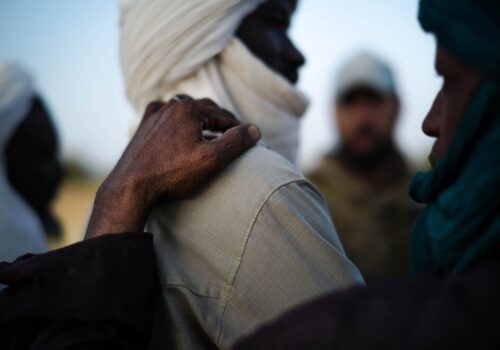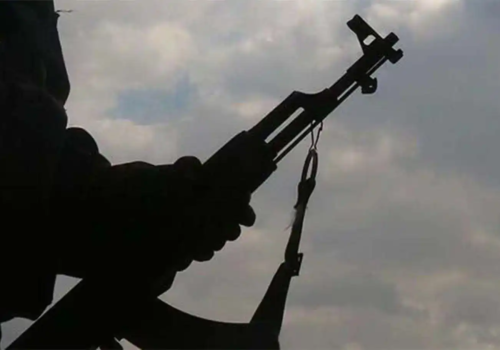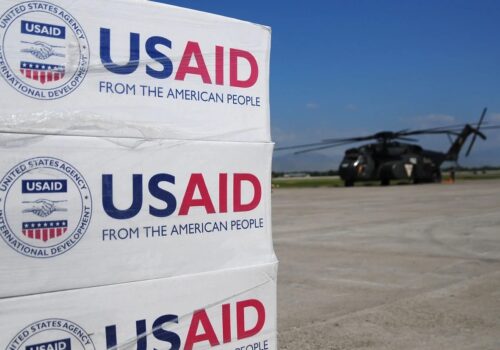The meeting between Trump and Ahmed al-Shara in Riyadh was not just a meeting between the two leaders, it was a breaking moment that redefined the fundamental dynamics of regional politics. It marked a shift in American foreign policy away from its interventionist reflexes and towards an interest-based line of cooperation.
Trump’s announcement to remove all sanctions against Damascus opened the door for a new era in the balance of power across the Middle East. This step should be read as part of a broader strategy to balance the influence of Russia and China while encouraging Gulf capital to move towards Syria. Shara’s return to the international system, while appearing on the surface as a “normalization”, actually represents a new phase of global competition centered on the Middle East.
Trump’s agenda was clear during the meeting: Syria’s participation in the Abraham Accords, normalization of relations with Israel, the removal of Iranian-backed actors from the field, the elimination of Palestinian militants and intelligence-field cooperation against ISIS. These items formed an overlapping equation with Israel’s security demands, the Gulf’s anti-Iranian line and Europe’s migration-terrorism policies.
Shara, neither rejected these demands outright nor embraced them unconditionally. He adopted a flexible and cautious stance. His emphasis on “Syria is no longer a threat but a transit corridor” was a sign of his quest to position his country as the center of regional energy and trade routes. His commitment to the 1974 border agreement was a position open to building trust with Israel rather than challenging it.
Israel’s Perspective: Shara’s Rise and Security Concerns
Trump-Shara meeting has reopened the question of whether Iran’s military and logistical lines in the Middle East will be disrupted. Israel’s security establishment sees this development as part of a two-pronged equation: Shara’s rise could either be an opportunity to limit Iranian influence or a source of future uncertainties stemming from past radical connections.
The biggest strategic question mark for Tel Aviv is with whom and on what principles Shara will build a post-Iranian security order. How the US will position itself in this new picture in favor of Israel is also a decisive factor. Trump’s call for the “expulsion of Palestinian militants” is the first time that Israel’s security demands, which it has been voicing for years, have become part of the international diplomatic agenda. This has opened a new chapter in relations with Damascus.
However, it is still unclear to what extent Shara will respond to these demands with real steps. Especially Shara’s contacts with jihadist organizations in the past by some members of his security structure are seen in Tel Aviv as a harbinger of future threats. Although the recruitment of foreign fighters to senior military positions is seen as an effort to integrate these actors into the system and bring them under control, this situation poses a risk of long-term fragility for Israel.
Thus, the issue from Israel’s perspective is not limited to Shara’s identity or rhetoric. It is also directly linked to the security implications of the new diplomatic ground on the ground. If the process proceeds with the simultaneous elimination of Iranian and Hezbollah influence, this could translate into a significant strategic gain for Israel. The opposite scenario would point to a growing security deficit in the name of regional normalization.
Turkey’s Multilayered Strategy: The Riyadh Summit and the New Regional Order
President Erdoğan’s online Riyadh summit demonstrated that Turkey is one of the central powers shaping the new order. Erdogan’s simultaneous diplomatic contacts with Trump and Saudi Crown Prince Bin Salman reaffirmed Ankara’s capacity for multilateral balancing.
Turkey’s strategy is based on the desire to fill the power gaps in the region and not to be left out of the US-Gulf-centered restructuring process. In this regard, the possibility of re-engagement with Damascus means for Turkey the international legitimization of its military presence on the ground, the safe return of refugees and the creation of permanent solutions based on local development. Ankara sees a defined and sustainable de facto presence as a precondition for playing a role in the reconstruction of Syria.
Turkey is reconstructing its border security paradigm and adopting a multi-layered security approach based on diplomatic transitions. Cautious engagement with Damascus, through stabilization belts supported by Gulf investments, allows Turkey to develop an effective territorial strategy at both the economic and geopolitical levels. The involvement of the Turkish private sector and civil society in northern Syria positions Turkey as a reconstruction partner. This position is reinforced by flexible alliances and balance-oriented diplomacy.
Within this multi-layered picture, Europe’s stance is also noteworthy. Signals of contact with Shara from Paris and Berlin indicate that Europe is now approaching Syria through economic and strategic interests. This brings with it the possibility of the transatlantic axis shifting from Washington to Brussels-Berlin.
Map of the New Era: Power, Security and Transition
The meeting between Trump and Shara symbolizes a transitional period in the Middle East in which the balance of power, actor roles and security approaches are being redefined. The most striking feature of this period is that ideological blocs are being replaced by multilateral, short-term and interest-oriented cooperation. New contacts between the US, Israel, Turkey, the Gulf and Europe over Syria signal the rise of flexible and conjunctural diplomacy structures.
Syria, under Shara’s leadership, has now become a central consensus ground where energy, security, border diplomacy and symbolic hegemony competition intersect. Legitimacy in this context refers to a shift from ideological assumptions to functionality and capacity for multilateral engagement.
One of the distinctive breaking points of the new regional order is the replacement of fixed deterrents with low-intensity but multifaceted security guarantees. Israel’s cautious but opportunity-oriented approach to Shara, Turkey’s efforts to turn its military might into diplomatic leverage, and the Gulf states’ use of reconstruction as a political tool are all indicators of this new security paradigm.
Meanwhile, the West and the Gulf are seeking to fill the vacuum left by Iran’s withdrawal not only strategically but also narratively. This indicates the beginning of a slow but multi-layered stabilization process in the region, which we can call “hegemonic silence”.
Turkey’s role in this transformation is being redefined as a facilitator of the transition. Ankara has been able to establish multilateral diplomatic platforms without sitting directly at the table with Damascus, and to maintain security-oriented relations with the West and development-oriented relations with the Gulf.
Trump-Shara meeting announces the dissolution of the classical Middle East narrative and the formation of a new regional architecture. This new structure is shaped by governance capacity, the ability to strike a balance and mutual tolerance rather than ideological truths. Syria is the void at the center of this transforming map – a strategic void that is still under negotiation as to what and with whom it will be filled.





